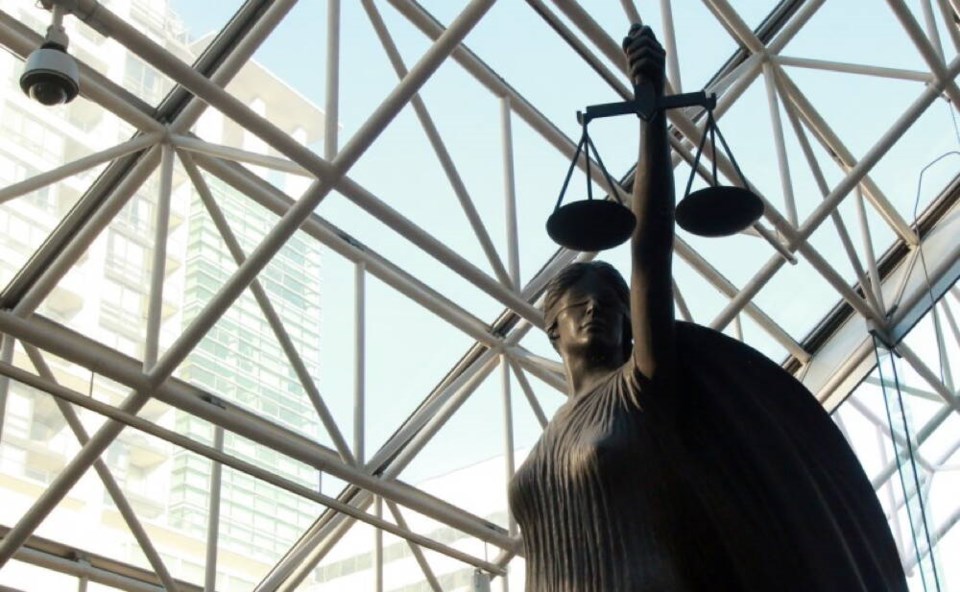A forensic pathologist testified Thursday that he removed five bullets from the body of a Nanaimo man shot and killed by Oceanside RCMP in October 2017.
Dr. Jason Doyle told a coroner’s inquest that he conducted an autopsy on Aaron Lee Prince and concluded that he died of multiple gunshot wounds.
The jury has heard that Prince, a 35-year-old heavy machinery operator, had been brought into the emergency department in Nanaimo by the RCMP three days before his death. The triage notes of his visit said his girlfriend had called police because he was seeing things that weren’t there.
On the early morning of Oct. 12, 2017, a distressed Prince stabbed himself in the chest. At 5:38 a.m., his friend David Poole called 911 and started driving Prince to meet an ambulance on the inland Island Highway.
Concerned Prince might still be in possession of a knife, B.C. Ambulance called the police to ensure the scene was safe for them. When Poole arrived at the highway, Prince jumped out of the car and started running in and out of traffic.
Two officers, Cpl. Ryan Rooke and Staff Sgt. Marc Pelletier, tried to arrest Prince but a violent struggle took place. Both officers were injured and testified that they fired their weapons because they feared for their lives.
Prince was shot three times in the back and twice in the chest, the pathologist testified. He was shot in the upper chest, mid-abdomen, upper left shoulder, right mid-section of the back and the mid-lower back. He also had a laceration on the back of his left scalp, a relatively minor wound consistent with a blow from a police baton, said Doyle.
The self-inflicted stab wound went into Prince’s chest cavity but did not damage the lung and was not significant, he said.
Prince also had a potentially toxic level of cocaine in his system, Doyle testified.
Dr. Aaron Shapiro, a forensic toxicologist with the provincial toxicology centre, testified that the toxicity of cocaine depends on how healthy the body is and a person’s tolerance for the drug.
Shapiro said he couldn’t tell how much or when Prince had taken cocaine because the way people respond to it varies. Some people unused to cocaine may be very awake, while some who use it on a regular basis may not experience much of an effect, he said.
It gets even more complex, said Shapiro, because cocaine affects the brain and can change it from its normal state
“A person who is used to having drugs like this in their brain can have a reconfiguration of the brain and that can lead to different psychological effects,” Shapiro testified.
“Someone who doesn’t use the drugs very often is unlikely to have major psychiatric effects from it. But there is a lot happening in the brain at any given time. And if someone has an underlying mental-health issue, then even a slight tweak of the brain from a drug like cocaine has the potential to trigger mental-health conditions and lead to some sort of behavioural change.”
Long-term cocaine use by people with underlying mental-health issues can set off violent behaviours, delusions, hallucinations and paranoia, he said.
Simon Bradshaw, the primary investigator for the Independent Investigations Office of B.C., also testified before the inquest at the Nanaimo Law Courts.
Bradshaw arrived at the detachment in Parksville at 1 p.m. that day, was briefed on the incident, then went to the scene. Bradshaw and his team interviewed Poole, paramedics and six officers who were not involved in the shooting.
Initially, Rooke and Pelletier declined to be interviewed, he testified. Both later provided a statement to the IIO.
The IIO concluded that the officers were involved in a struggle and used a number of use-of-force options before using their firearms, said Bradshaw. Both officers were injured and police equipment was strewn around the area.
“The use of force was justified and can be explained by the evidence,” Bradshaw testified.



